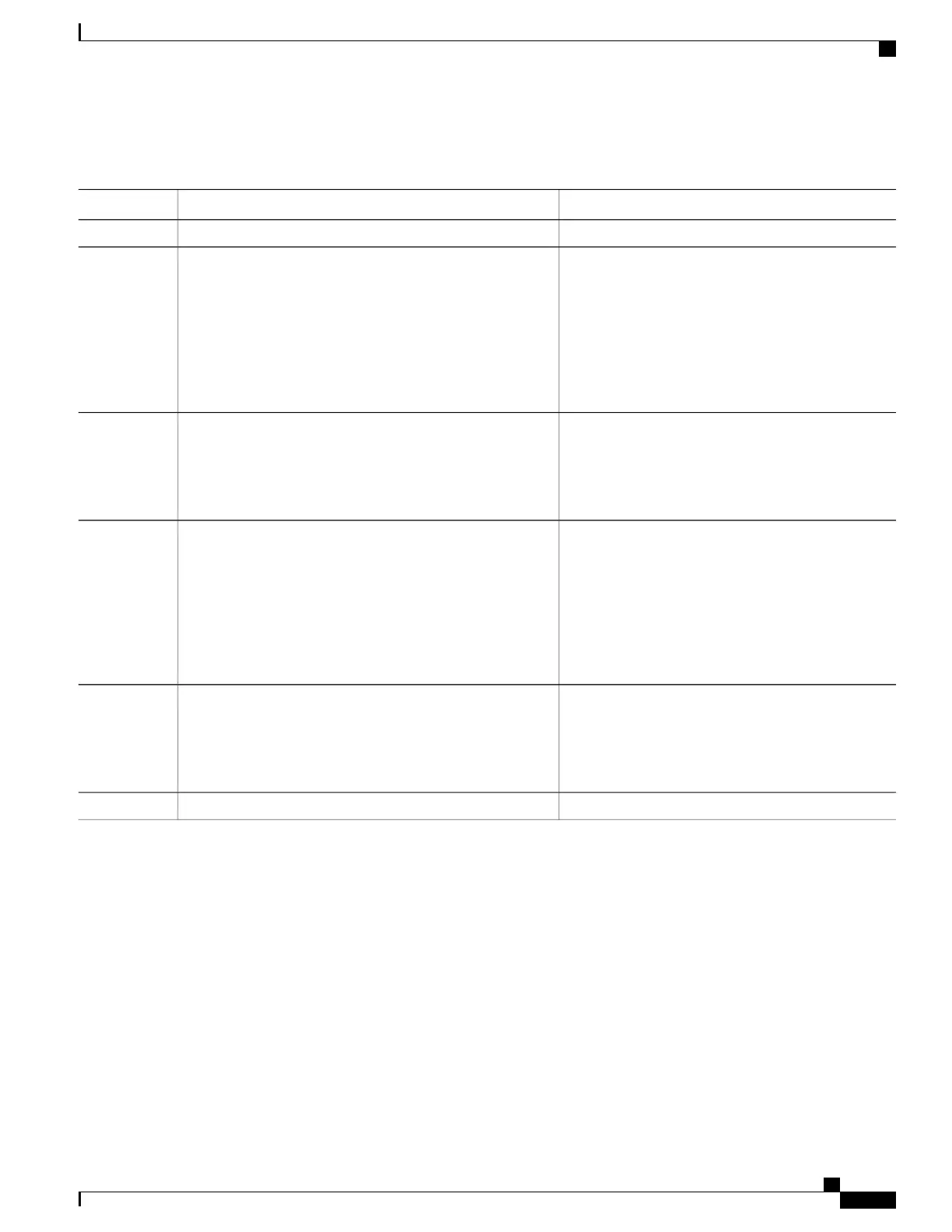DETAILED STEPS
PurposeCommand or Action
configure
Step 1
Configures a BGP routing process and enters router
configuration mode.
router bgp as-number
Example:
RP/0/RSP0/CPU0:router(config)# router bgp 125
Step 2
•
The as-number argument identifies the
autonomous system in which the router resides.
Valid values are from 0 to 65535. Private
autonomous system numbers that can be used in
internal networks range from 64512 to 65535.
Specifies a neighbor IP address.
neighbor ip-address
Example:
RP/0/RSP0/CPU0:router(config-bgp)# neighbor
10.0.0.20
Step 3
Specifies the address family.address-family { ipv4 unicast | ipv4 multicast | ipv4
labeled-unicast | ipv4 tunnel | ipv4 mdt | ipv6 unicast
Step 4
| ipv6 multicast | ipv6 labeled-unicast | vpnv4 unicast
| vpnv6 unicast }
Example:
RP/0/RSP0/CPU0:router(config-bgp-nbr)#
address-family ipv4 unicast
Attaches the route-policy, which must be well formed
and predefined.
route-policy policy-name { in | out }
Example:
RP/0/RSP0/CPU0:router(config-bgp-nbr-af)#
route-policy example1 in
Step 5
commit
Step 6
Modifying a Routing Policy Using a Text Editor
This task explains how to modify an existing routing policy using a text editor. See Editing Routing Policy
Configuration Elements, on page 531 for information on text editors.
Cisco ASR 9000 Series Aggregation Services Router Routing Configuration Guide, Release 5.1.x
OL-30423-03 543
Implementing Routing Policy
Modifying a Routing Policy Using a Text Editor

